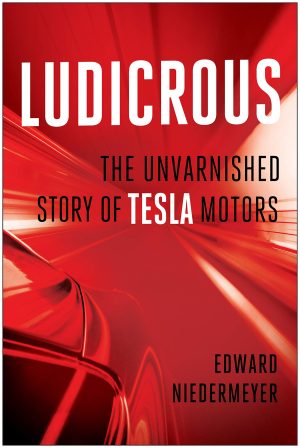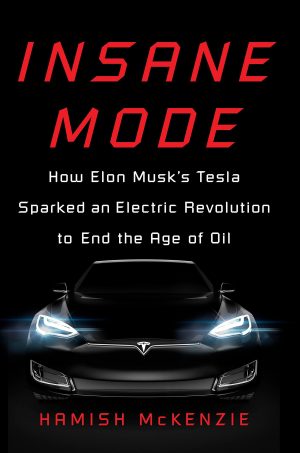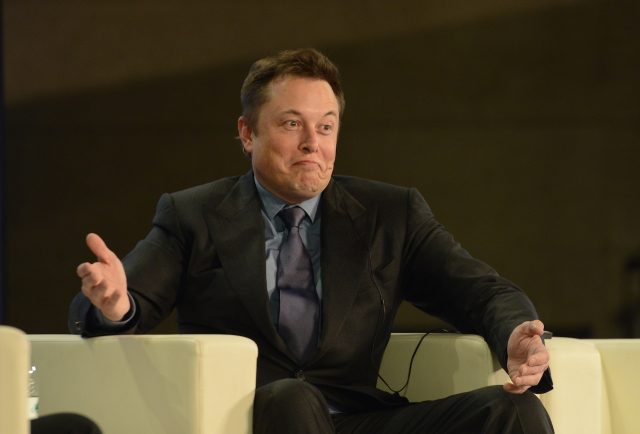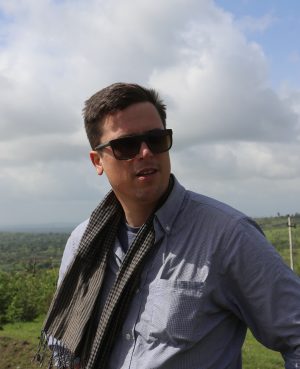Journalist Ed Niedermeyer remembers the exact moment he became a Tesla skeptic: Memorial Day weekend 2015. That's when Niedermeyer traveled to the Tesla Supercharger facility in Harris Ranch, California to see Tesla's first (and, it turned out, only) battery-swap facility.
At a live demo two years earlier, Tesla CEO Elon Musk had shown a Model S getting a replacement battery pack in 90 seconds—compared with four minutes to refuel a conventional car. Now that the technology was available to the public, Niedermeyer wanted to see it in action.
"I was down there three or four days," Niedermeyer told Ars recently. "There was a ton of traffic and a ton of lines for the Superchargers." Some people faced multi-hour waits. Tesla brought in spare Superchargers powered by diesel generators to speed things along. But the battery-swap facility stayed closed.
A few weeks later, Elon Musk announced that Tesla wouldn't expand the service because it was "not very popular." That explanation made no sense to Niedermeyer.
"There was definitely demand there," Niedermeyer says. He talked to a number of Tesla owners who regularly traveled between San Francisco and Los Angeles. Some would have gladly paid a premium for the battery swap service if it had been available. But at least on that weekend, it wasn't.
So what was going on? Niedermeyer believes Tesla was cynically gaming California's system of Zero Emission Vehicle credits. In 2013, California started giving automakers extra credit for selling electric cars that could recharge in 15 minutes or less. Supercharging isn't fast enough to qualify. Battery swapping is.
But crucially, automakers didn't have to prove that customers were actually using fast charging capabilities. As long as a carmaker could demonstrate that vehicles were theoretically capable of rapid charging, they got extra credits—even if most customers never used the capability. Niedermeyer estimates that Tesla reaped tens of millions of dollars in extra credit revenue with this gimmick (Tesla didn't respond to emails seeking comment on this).
"That's when I decided it's worth digging in," Niedermeyer told me. "Companies don't just do something like this once."
Elon Musk's "hype campaign"
In recent years, Niedermeyer has emerged as one of Tesla's most insightful and dogged critics. And in August, Niedermeyer published Ludicrous: The Unvarnished Story of Tesla Motors. Drawing on previous reporting and offering some fresh scoops, the book offers a skeptic's perspective on the upstart electric carmaker.

Niedermeyer identifies 2013—the year Musk demoed the Model S's battery-swap capabilities—as a turning point.
That was the year the Model S started selling in significant volumes. Tesla earned its first quarterly profit and the stock soared to record levels. In response, Niedermeyer writes, Musk "embarked on a hype campaign that continually ratcheted up Teslas ambitions and set him apart from anyone else in the public sphere. His wild-eyed production targets, seemingly impossible technological promises, goofy sense of humor, and relentless pursuit of media coverage quickly turned into a runaway train."
For example, in 2013, Musk claimed that solar panels and batteries would allow SuperCharger stations to continue operating even if the electric grid went down. "Even if theres a zombie apocalypse, youll still be able to travel throughout the country using the Tesla supercharging system," Musk quipped.
Yet three years later, in 2016, Musk tweeted that while Tesla had "some" solar panels "installed already," that "full rollout" of solar panels depended on a forthcoming upgrade to SuperCharger technology. According to Niedermeyer, "only a half-dozen or so" of the first 800 supercharger stations had "solar panels of any kind" by June 2017. Tesla didn't respond to my email asking how many SuperCharger stations have solar panels today, but there still seems to be a lot of stations without them.
In October 2016, Musk announced that all new Tesla vehicles would have hardware necessary for full self-driving, and he predicted that it would take about two years to release the necessary software. Yet three years later, Tesla is still struggling to master self-driving in parking lots. Musk continues to claim that full self-driving is less than two years away, but that's still hard to believe.
"A lot of those things do come to pass"
Hamish McKenzie, author of the 2018 book Insane Mode: How Elon Musk's Tesla Sparked an Electric Revolution to End the Age of Oil, argues we shouldn't overlook Tesla's accomplishments.
"What's kind of amazing is even though he's missing all the deadlines, a lot of those things do come to pass," McKenzie tells Ars. Tesla has missed self-imposed deadlines for shipping each of its new car models. But the vehicles did eventually ship and customers have generally been happy with them.

It's not surprising that McKenzie would have a more positive take on Tesla than Niedermeyer. In January 2014, he left a job as a journalist for Pando to become Tesla's lead writer, and he worked there for a little over a year. He wrote Insane Mode after leaving Tesla; today he is co-founder of the technology startup Substack.
McKenzie acknowledges that Musk has repeatedly made unrealistic predictions about how quickly technologies could be developed. "I don't have insight into whether or not it's a deliberate strategy," he told me. "I think he believes the things he says when he says them."
On some level, making unrealistic promises is an inherent part of entrepreneurship. Entrepreneurs need to convince a bunch of people—customers, employees, investors, and others—to take risks on a new and untested company. That inherently means predicting success even though failure is a likely outcome.
That's especially true when someone is starting a car company. The most likely outcome for a car startup is bankruptcy, as a number of Tesla's electric car rivals have demonstrated in recent years.
"It's crazy that Tesla exists as a car company," McKenzie told me. And, he said, it's even more crazy that Tesla succeeded as an electric car company—something most people dismissed as wildly impractical when Tesla was founded in 2003.
One way to interpret Musk's behavior over the last 15 years—making unrealistic promises, delaying payments to suppliers, taking deposits long before products and features are ready to ship—is that he's just doing what it takes to get a new car company off the ground. Getting Tesla to where it is today has required raising billions of dollars from investors, and the company skated at the edge of bankruptcy several times over the last 15 years. If Musk had been less shameless about using hype and boundary-pushing gimmicks to get investors and customers in the door, Tesla could easily have plunged into the abyss.
Many customers are happy to cut Elon Musk slack

Despite Musk's checkered track record for delivering on his promises, the fact remains that Tesla has a lot of satisfied customers. That's true even for a group of customers who have personally paid a steep price for one of Musk's so far unkept promises: purchasers of the "full self-driving" package.
Tesla didn't just promise full self-driving capabilities in October 2016; the company began pre-selling a self-driving software package to customers for $3,000 or more. Customers who bought this package in 2016, 2017, or 2018 have gotten little or nothing for their money. While Tesla has released major new features like Navigate on Autopilot and Smart Summon, these upgrades have also gone to customers who only purchased the basic Enhanced Autopilot package during the same time period.
Yet when I talked to some of them about the situation in October 2018, I was surprised to find most weren't upset about it.
Elon Musk "usually always delivers, but his deadlines aren't always the most accurate," Model 3 owner Charles Scott told me. Scott recognized that Musk operated on "Elon time" and was unlikely to develop full self-driving technology as quickly as he claimed. But Scott said that he would enjoy seeing the technology improve over time. In his mind, paying for the full self-driving package before it was ready was "sort of like getting an early ticket to the show."
Scott's viewpoint wasn't universally shared. Another customer who bought the full self-driving package with his Model S in October 2016 told me that he had taken Tesla's optimistic marketing at face value and felt burned after two years without anything to show for it. But most of the people I talked to for that 2018 story were still happy Tesla customers.
And that's been true more broadly: despite a string of broken promises, Tesla has an enthusiastic and growing customer base. Tesla also continues to enjoy the confidence of Wall Street. In its most recent fundraising round, Tesla raised $2 billion from public markets without breaking a sweat.
It's not hard to see why. For all its faults, Musk and Tesla have accomplished amazing things over the last 15 years. Tesla really has accelerated the transition to electric vehicles by demonstrating how to build electric cars people want to buy. Tesla's vehicles are both environmentally responsible and fun to drive. Given that overall record of accomplishment, customers are willing to cut Musk a lot of slack on some of Musk's specific promises.
It's hard to have rational discussions on the Internet
In a reasonable world, people could acknowledge both Tesla's huge contribution to advancing electric vehicle technology and the significant ways it has fallen short of its own hype. Unfortunately, the modern Internet is not a reasonable place. The centrifugal force of social media has turned online discussion of Tesla—like most other topics—into an angry, polarized flamewar.
Tesla has long been known for its enthusiastic fan base, but their ranks have swelled in recent years. Today there's an entire ecosystem of news sites, online forums, and YouTube channels devoted to pro-Tesla advocacy. Opposing them are a community of Tesla skeptics that has organized around the hashtag TESLAQ—a "Q" is conventionally added to a company's stock ticker after it has gone bankrupt.







